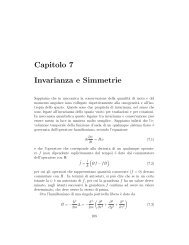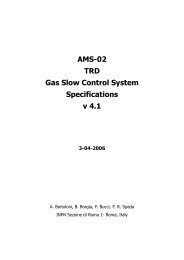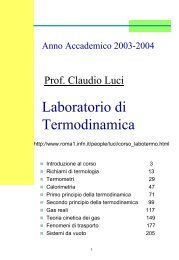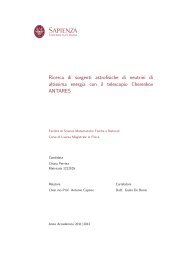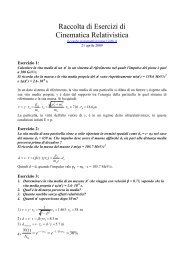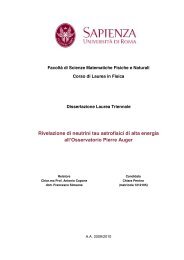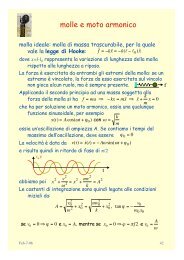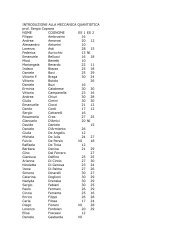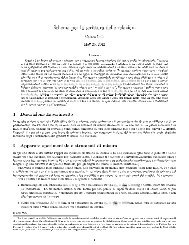Create successful ePaper yourself
Turn your PDF publications into a flip-book with our unique Google optimized e-Paper software.
where V ± (r) are <strong>the</strong> solutions <strong>of</strong> <strong>the</strong> equation in E<br />
i.e.<br />
V ± = BL ± √ B 2 L 2 + ACL 2<br />
C<br />
CE 2 − 2BLE − AL 2 =0, (4.27)<br />
= 1 C (BL ±|L|√ ∆) . (4.28)<br />
Some authors write this formula without <strong>the</strong> modulus (which is<br />
equivalent to exchange <strong>the</strong> definitions <strong>of</strong> V + and V − when L 0, C>0.<br />
In <strong>the</strong> Schwarzschild limit a → 0, we have<br />
V + + V − ∝ a → 0 ,<br />
V + V − →− L2 ∆<br />
r 4 (4.32)<br />
<strong>the</strong>refore, if we define V ≡−V + V − − κ∆/r 2 ,Eqns. (4.30),(4.31)<br />
reduce to <strong>the</strong> well known form<br />
ṙ 2 = E 2 − V (r)<br />
V (r) = − κ∆<br />
r + L2 ∆<br />
(<br />
2 r 4<br />
= 1 − 2M )<br />
)(−κ + L2<br />
r<br />
r 2<br />
(4.33)<br />
where we recall that κ = −1 fortimelikegeodesics,κ = 0 for null<br />
geodesics, κ =1forspacelikegeodesics.<br />
72



